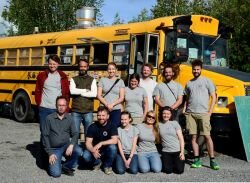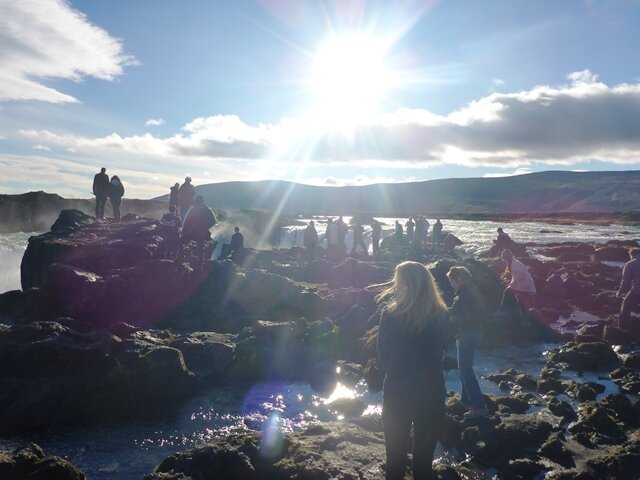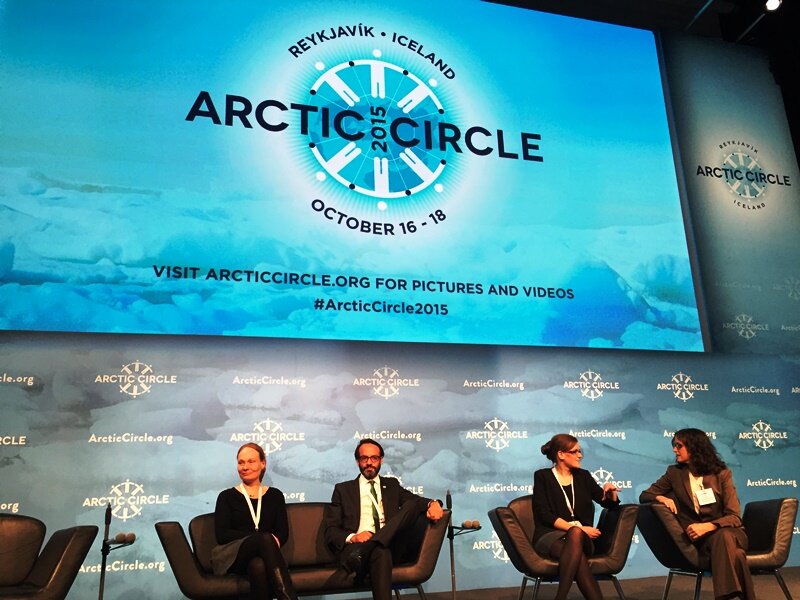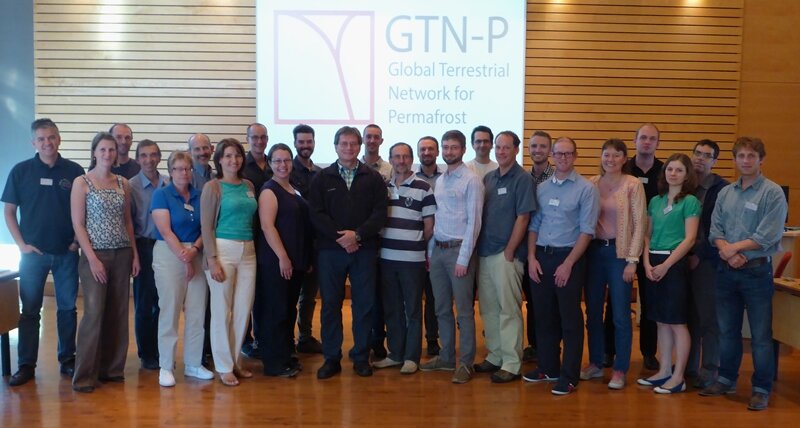 After a large amount of “To-Do-Lists”, many Expedition Meetings and an extensive packing of 750 Kg of equipment, the COPER (COastal Permafrost ERosion) group is ready for a new Expedition to Herschel Island!
After a large amount of “To-Do-Lists”, many Expedition Meetings and an extensive packing of 750 Kg of equipment, the COPER (COastal Permafrost ERosion) group is ready for a new Expedition to Herschel Island!
Our fieldwork is based on Herschel Island, the westernmost Canadian island located 2 km offshore from the Yukon Coast, Canada. The Island is a push-moraine that was formed during the Last Glacial Maximum during the advance of the Laurentide Ice-sheet, which was covering most of northern Canada. One third of the Island consists of ground ice that composes the upper 10-15 meters of the permafrost. Its ice-rich permafrost coast is highly vulnerable to thawing. Major processes of permafrost degradation on the Island have been observed and include: coastal erosion, subsidence and thermo-erosion.
Besides permafrost (the most exciting thing for us on the Island!), another interesting characteristic of the Island is its long history of human occupation and its cultural heritage. Archaeological studies on the sites have revealed settlements of more than 800 years old. The Island became a central trading point for the whaling industry from 1826, when John Franklin discovered it. Remnants of the rich history of Herschel Island are still visible on the Island such as houses, graveyards or traditional ice houses built in the permafrost using dynamite
This year, we are 8 members of the group to leave for the expedition:
 On Herschel, Isla Myer-Smith and her team from Edinburgh will join us, as well as Gustav Hugelius and Matthias Siewert from Stockholm University, Tarmo Virtanen from Helsinki University, Patrick Potter from the Geological Survey of Canada and the park rangers from Qikiqtaruk-Herschel Island Territorial Park.
On Herschel, Isla Myer-Smith and her team from Edinburgh will join us, as well as Gustav Hugelius and Matthias Siewert from Stockholm University, Tarmo Virtanen from Helsinki University, Patrick Potter from the Geological Survey of Canada and the park rangers from Qikiqtaruk-Herschel Island Territorial Park.
We are ready for the fun adventures and hard fieldwork. Next time, I will bring you to the Arctic, with more pictures and stories!
- Hugues Lantuit will lead the expedition and focus on supporting the work of the PhD students. Hugues has been conducting research in the area since 2003, and it is his 12th time on Herschel Island.
- Jan Kahl is the logistician. It is his first time on Herschel.
- George Tanski (PhD student since 2014). It is 4th expedition to Herschel. His research focusses on the degradation mechanisms and transport pathways of permafrost organic matter from retrogressive thaw slumps. He is also the president of PYRN.
- Anna Konopzack (PhD student since 2014). Her project focusses on the temporal and spatial variability of Arctic coastal dynamics, the main drivers of these variabilities and how these are contributing to carbon mobilization. This year her main task in the field is to run the coastal monitoring program which was established by the Geological Survey of Canada, which means taking Digital Global Positioning System (D-GPS) measurements of coastal transects and along the coast at numerous sites along the whole Yukon Coast. She is also responsible to mount three Acoustic Doppler Current Profilers (ADCP), two RBRs and a Conductivity Temperature Depth Measurer (CTD) in the water around Herschel Island, in order to understand how coastal dynamics under the water surface work.
- Samuel Stettner (PhD student since 2015). Sami will be looking at the differences in soil moisture in order to later relate it to radar data.
- Saskia Ruttor (Master student). She is responsible for the laboratory on Herschel and will analyse. She will also take samples for her own thesis on one retrogressive thaw slump.
- Isabell (Master student). She is responsible for setting the flume in Ice creek and for the laboratory.
- Justine Ramage (PhD student since 2015). My research focus is on thermo-erosional landforms. My goal is to define the different morphologies of thermo-erosional landforms and to create accurate estimates of the contribution of thermo-erosion to the carbon cycle at a regional and pan-Arctic scale.
 On Herschel, Isla Myer-Smith and her team from Edinburgh will join us, as well as Gustav Hugelius and Matthias Siewert from Stockholm University, Tarmo Virtanen from Helsinki University, Patrick Potter from the Geological Survey of Canada and the park rangers from Qikiqtaruk-Herschel Island Territorial Park.
On Herschel, Isla Myer-Smith and her team from Edinburgh will join us, as well as Gustav Hugelius and Matthias Siewert from Stockholm University, Tarmo Virtanen from Helsinki University, Patrick Potter from the Geological Survey of Canada and the park rangers from Qikiqtaruk-Herschel Island Territorial Park.We are ready for the fun adventures and hard fieldwork. Next time, I will bring you to the Arctic, with more pictures and stories!
After a 36-hours long journey and 6 different flights we smoothly landed in Inuvik on July 16th. We were all quite happy to see the colors of the north, which contrasted with the white background formed by the clouds that were surrounding us during the hours of flight.
Inuvik is a small arctic town of 3400 inhabitants, mostly Inuvialuits and it is located along the Mackenzie River. The city is reachable via one road coming from the south, the Dempster Highway or by the air.
We stayed there for 4 days to get rid of our jet lag and prepare for Herschel Island. In fact we forgot about the jet lag and just jumped into the preparations. This implied scheduling and organizing the next flights to Herschel, packing and weighing the scientific equipment, shopping for more equipment, buying the food, and cooking.
We were hosted by the Aurora Research Institute, which provided us with housing and research facilities http://nwtresearch.com/.
We were hosted by the Aurora Research Institute, which provided us with housing and research facilities http://nwtresearch.com/.
This was actually the first priority as defined by the rule "Safety first: Food". We shopped and chopped, reshopped and rechopped and then we fried and stewed enough meals to keep 9 to 12 people away from hunger for the next 28 days. We put all dishes into bags and froze them to better transport them to the island. And we did not loose any finger on the cutting board!
Meanwhile, we prepared the scientific equipment. This implied buying tools that we did not ship to Inuvik, getting the guns, ammunition and bear sprays, packing and weighing the boxes of equipment, preparing the boat that would bring Hugues, George, Jan and the rangers to Herschel, and so many other things.
This has been an intensive 4-days preparation but we now feel ready for a 28-days and even more intense fieldwork!

|

|

|










